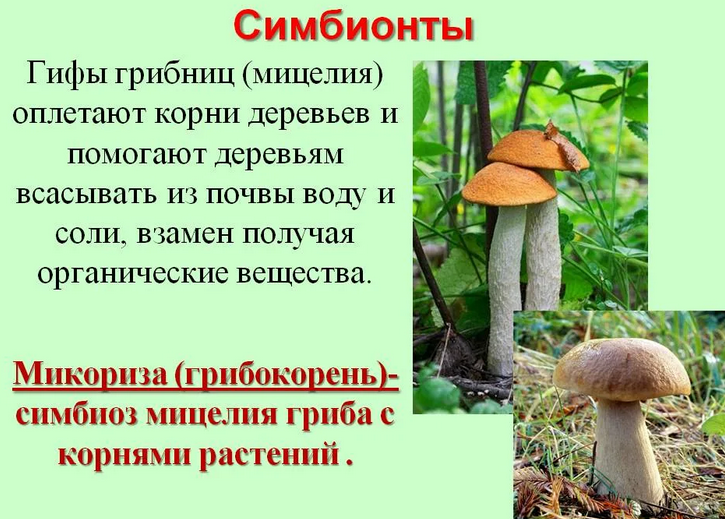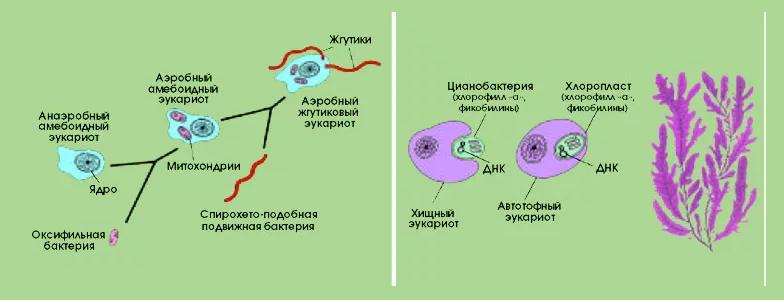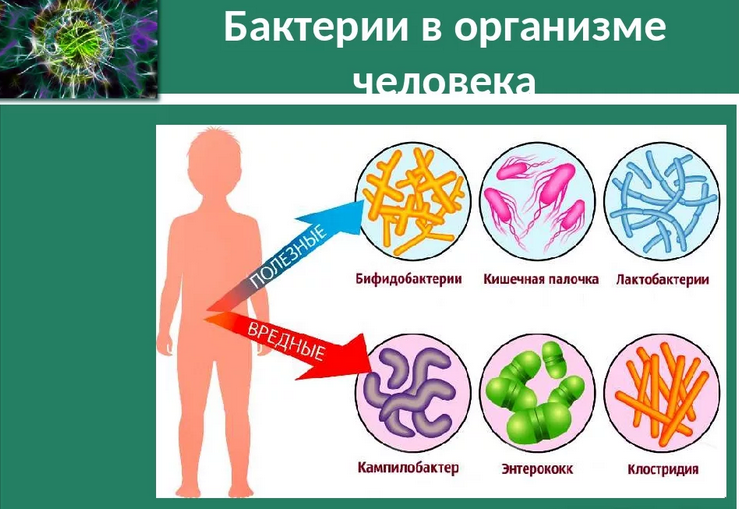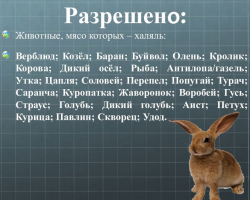In the blood you can find the smallest light particles. They are called symbionts. They give vitality to the body or decompose - depending on whether a person lives constructively and whether he eats right.
Read on our website another article on the topic: "Viruses - Biology". You will find a brief presentation, structure scheme, reproduction, species, history of the opening of viruses.
From this article you will learn what symbionts are. We will also tell you how the Symbiont body differs from the parasite body and much more. Read further.
Content
- What relates to symbionts: these are light particles or bacteria, examples
- The term "symbiont", "dark field" - what it is: definition
- The role of symbionts in the life of the body
- An important role of lactobacilli and bifidobacteria in human symbiosis: useful symbionts
- What is the difference between the Symbiont body from the parasite's body?
- Why are symbionts denied traditional medicine?
- Discoveries of scientists associated with a group of symbionts
- Symbionts merge, forming new organisms, toxins
- Such variable bacteria: the process of transformation into symbionts
- Where do the symbionts come from?
- What other sources of symbionts are there?
- Video: Mikhail Nikitin | The theory of symbiogenesis. 120 years of development
- Video: Kingdom of Bacteria: structure, vital activity, reproduction, role in nature. Purchase to the exam
- Video: Inner Symbiosis
What relates to symbionts: these are light particles or bacteria, examples

Symbiont - The body involved in symbiosis. In nature, there is a wide range of examples of mutually beneficial symbiosis (mutualism). From gastric and intestinal bacteria, without which digestion would be impossible, to plants (some orchids serve as an example, whose pollen can only be distributed, a certain type of insect).
Symbiont (SYM \u003d Together, BIOS \u003d Life) - describes microscopic visible particles smaller than cells or bacteria. Symbiones are easy to observe using a dark -button microscope with a thousand -line increase. They look like actively moving particles in blood plasma and have the size of about one twentieth of red blood cells. Their motor behavior can be described as “swaying”, three -dimensional, continuous and interactive. This description is similar to the molecular movement of Brown. Therefore, it can be said with confidence that symbionts are light particles and bacteria. It all depends on the environment.

There are many examples of symbionts, especially in nature:
- Mushroom mycelium nourishes trees
- Termites and ruminants - cow in the scar live in cows. When the cow chews grass, she does not nourish herself, but the cowls that help to digest food.
- Birds and animals - when, for example, the buffalo goes across the field or water, it lifts up insects that the bird following the animal eats.
- Cleaning the skin of animals with birds from parasites.
- Cleaning the mouth of large fish with shrimp and small fish, etc.
But where do molecules and symbiontes get energy and impulses for their movement?
The term "symbiont", "dark field" - what it is: definition
Microscopy of the dark field means that a blood or tissue sample is considered on a dark background, while the object is illuminated by a light ray passing through the side panel. Thanks to this technology, tiny particles in plasma are highlighted and, therefore, become visible.
Symbionts can be seen in a dark -button microscope in the form of small white dots. Although these particles are not considered as living beings in themselves, they have their own movement and the ability to unite in larger structures. From a biochemical point of view, symbionts consist of proteins of albumin and globulin. If you look at the blood under a microscope of the dark field within a few days, you can notice the constant movement of these particles. Such judgments are associated with the forces of the universal energy field. They receive energy from him, because they have the characteristics of this field and are on the same length of the energy wave. Then they convey these characteristics and life to the cells of the body. Thanks to this, harmony, order and interaction arises in the human body.
The role of symbionts in the life of the body
Symbionts - irreplaceable building blocks for all metabolic processes. If there are many and they are actively moving, this is a good sign of normal acid-base balance and working immune system. Together with minerals and trace elements, they form the basis of a healthy metabolism and effective aerobic energy production. Abundant symbionts prevent infection with viruses, bacteria and parasites and prevent them from developing in obvious clinical paintings. Lock acid associated with symbiontes also supports the immune system in the recognition and destruction of tumor cells.
Symbionts have different names: Symprotit, Spermit, Chondrit, etc., depending on the form, behavior and the alleged stage of development. It is worth noting that this organism consists of even smaller particles - wipers. Chemically, they mainly consist of albumin and globulin, that is, protein structures that act in the body as buffer substances (acid-base balance) and carriers of vitamins and minerals. They have neither the cell wall nor the organelles, and they can change their appearance in a second. They are too small to be taken for bacteria, and they do not have a significant amount of DNA or RNA. However, if you look at your blood in the dark -button microscope, you can notice these symbiontes as an actually “living” element of blood.
An important role of lactobacilli and bifidobacteria in human symbiosis: useful symbionts

Why do people consume probiotic products, such as live yogurt or others? Why do they believe that the intestinal flora plays such an important role in metabolism and protection? All because lactobacilli and bifidobacteria have an important role in the symbiosis of the human body. The predominant lactobacilli in a healthy intestine produce lactic acid. But is the production of this substance the only thing that these intestinal bacteria do for humans? Read more:
- The main function of these intestinal bacteria is the creation of symbionts.
Useful symbionts:
- For the optimal production of symbionts, it is extremely important that the upper part of the small intestine has the perfect PH values, a rich supply of nutrients and “clean” conditions.
- Therefore, in the intestines there should not be poisons coming from food, putrefactive bacteria and fungi (Candida albicans).
If these cells appear in the intestines, then pathogenic, that is, pathogenic particles, which visually resemble healing symbionts are formed.
What is the difference between the Symbiont body from the parasite's body?
The parasitic organism, like the symbio body, cannot live independently.
- The parasite body harms the host body, uses nutrients, and emits harmful metabolic products.
- The symbiont body brings benefits to the host body. For example, mushroom and wood: the mushroom provides a tree with water with minerals, and the mushroom tree with organic substances.
Pathogenic symbionts:
- Unlike useful symbionts who have a “life program”, pathogenic symbionts carry a “decomposition program” with them.
- According to Professor Gunther Enderlyin, they develop in the blood and tissues in pathogenic microorganisms, such as viruses, bacteria, fungi and parasites.
- Their task is to destroy the fabric and return it to the natural cycle.
Of course, this is unpleasant. You can resist this decomposition process using a diet rich in vital substances and good intestinal bacteria. Therefore, it is so important to eat, play sports and lead an active lifestyle.
Why are symbionts denied traditional medicine?

Symbionts have not yet been properly studied by traditional medicine and therefore officially not recognized and not defined, that is, they are completely denied. Traditional medicine, which largely ignores the use of a dark field microscope, considers symbiontes as lifeless particles of globulin, as products of the decay of red blood cells or as meaningless optical interference from a microscope glass. However, observing a living drop of blood under the microscope of the dark field, it is difficult to accept these actively moving particles that interact with each other, for inanimate matter.
- Symbionts can only be observed in drops of living blood and only with the help of a dark -button microscope.
- An ordinary light microscope does not allow you to see the composition of living blood or tissue in the smallest details.
- After all, a sample of fabric or blood must first be dried and painted so that the components are visible. Due to such manipulations, the symbionts freeze and become invisible.
- This is very similar to particles of dust in the air that are visible in the barn when the light penetrates only through the gap, but they immediately disappear when the door of the room opens.
When Anton Levenguk He made a great contribution to biology and developed the first microscope in the 17th century, these particles, which are now called symbionts, could already be observed. In his famous experiment, Levnguk collected rainwater and found that after four days small moving particles (Wrongers) began to appear in water, which used to be “lifeless”. Levenguk is believed to recognize the original life form in these particles.
The great scientists of that time, Robert Boyle and Sir Isaac Newton, did not like the discovery of Levenguk. Even then, science was convinced that life could not arise from “nothing” or “light”, but only through reproduction with the help of fatherly and maternal cells. After the opening of Levnguk implied the appearance of life without reproduction, his scientific work was discredited.
It is worth knowing: After that, many cells, organs and living forms were created from these small particles. Experiments continue to this day.
Discoveries of scientists associated with a group of symbionts
No one knows where the first particle of the symbiont came from. However, well -known scientists, such as Beshan, Enderlein and many others, see the beginning of the life process in Obiten. Interestingly, these protectors were found in the tissues of a frozen mammoth. After slow thawing, these particles from the animal’s fabric spontaneously found a new life. The discoveries of scientists associated with a group of symbiontes continue.
Obstists were also extracted from oil, which is an energy concentrate of fossil organisms. Russian researcher Ginsberg Karagichev back in 1926 proved that particles secreted from oil show spontaneous viability and begin to metabolize sugar. It was also proved that "the Offers cannot be killed either with sulfuric acid, or by heating them, for example, in a ceramic furnace to 1300 degrees Celsius." Thus, it seems that the Obstists and their larger relatives, symbionts, exist for a long time on Earth. And, most likely, not only on our planet, since there were statements that the Wrings were discovered in the hardening or ice of Martian meteorites.
All this is due to the discoveries of Professor Gunter Enderlyin, who conducted his research about a hundred years ago. An important discovery was that there is a symbiosis between symbiotic, microscopic judgments and human (or animal) organism. He called these small particles "symbionts."
Regardless of the discoveries of enderlane, the theory of Symbionts/Endobiones, over the past twenty years has gained more recognition thanks to the use of modern molecular biological methods. The new term (introduced by Professor Max Taylor from the University of Vancouver) is the theory of serial endosimbionte. Our society is currently at the stage of transition from the information age to a new cycle, in which symbiosis will take an important place. All aspects of modern society require symbiosis. In the literal sense of the word, symbiosis means the coexistence of organisms of different types.
Symbionts merge, forming new organisms, toxins
The endosimbiotic theory that appeared not so long ago claims that unicellular organisms, plants, animals and people are a product of symbiogenesis - the formation of new organs and organisms by symbiotic merging from two to four forms of life. New research results show that enderlane opened a hundred years ago with the help of a dark field microscopy: blood is not microbiologically sterile. Bacteria appear as a result of symbionta agglomeration under the influence of certain environmental factors.
In addition to harmless endobonic forms of bacteria, which for mutual benefits support peaceful coexistence with their own host body, there are a number of pathogenic, that is, pathogenic microbes, which can also be present in the form of forms with a deficiency of the cell wall. These pathogenic forms or toxins are the result of a disturbed medium in the blood and tissues - the keywords of this process are excessive acidity or slagging.
Such variable bacteria: the process of transformation into symbionts

Bacteria - under certain conditions, can change their shape to a form of a different type.
- Bacilli can have different (“pleo”) forms (“morphs”).
- It all starts with a protest that turns into a virus, then it transforms into a bacterium, which can become a fungus.
- Each of these organisms ultimately evolves back into the form of a protest from which it originally arose, and the life cycle begins again.
- Wrinkles never dies.
Professor Enderlein, on the basis of his observations, proved that bacteria and fungi are present in the blood in a wide variety of forms. He introduced the term "pleomorphism." But even today, after two hundred years, professors are taught at universities that microorganisms exist only in the form of an unchanged form and can independently be the cause of diseases. Nevertheless, ordinary clinical and microbiological studies, especially in the last ten years, show that pleomorphism is more suitable for explaining certain observations in the treatment of chronic microbial diseases. These studies also show that pleomorphism has specific starting factors.
The starting point for enderlane studies was the observation of the French pharmacologist Antoine Bechang in the 19th century that animal and plant cells have obtus, which do not disappear with cell death and, under certain circumstances, cause fermentation or increase, can “transform” into developed bacteria or fungi. Beshan already had the idea that the indestructible is indestructible. They are found in all living things and represent the transition to living matter. Beshan believed that diseases are caused not by the external cause (infection), but by the internal cause, more precisely, a change in the environment.
Under certain circumstances or pathogenic influences, such as stress, poor nutrition, increased acidity of tissues, lack of energy, etc., these protects can develop into bacteria that cause enzymatic decay (similar to the dissolution of a “dead” biological substance in nature).
It is necessary to remember: Blood is under strict control p. Ideally, it is in a narrow range - about 7.3. This is a slightly alkaline indicator, which is also an ideal life environment for Protite.
If this pH changes, it will also be wiping to adapt and develop in another form in order to survive. However, in this form in the composition of the blood it can acquire parasitic and aggressive properties. But certain bacterial forms can turn back into harmless symbiontes/wipers. This is really impressive proof of the pleomorphic theory.
Where do the symbionts come from?
Although a lot of research material was collected about the nature and development of these small particles in the blood, there is still no fundamental understanding of the origin of these particles. Where do the symbionts come from?
- You can put forward a hypothesis that the protectors and symbionts that are in our blood are created during bacterial breakdown of food in the intestines.
Interesting:
- After many scientists have proven a positive effect on the health of plant natural foods, the properties of these products under the dark field microscope were more carefully studied.
- For this, ripe raw fruits and vegetables with a small amount of distilled water were cut and placed in a blender.
- The products were well beaten, after which scientists drew attention to the result under the microscope in the dark field.
- In most products, there was no optical activity (even for many hours). They turned out to be "barren."
- From here they came to the conclusion that without the digestive process, there would be no formation of symbionts in real time.
This assumption was later confirmed by other scientists:
- “The appearance of tiny subbacterial microorganisms was found in the digestive tract of a number of fish from a large barrier reef in Australia. These microorganisms, known as “Protiten”, can only be found in herbivorous types of Acanthurden, but not in planktophorens of Acanthuriden. ”
The cause of these judgments is bacterial decomposition of plant foods in the digestive tract. The next question is whether this process can occur outside the intestines. The answer was the usual sauerkraut. If you look at it under a microscope, you can see active symbionts and wipers floating between large fibers of the vegetable. They are similar to those that are visible in blood plasma. This was evidence that lactobacilli plays a key role in the release of symbionts.
What other sources of symbionts are there?

Exploring various products based on the principle of lactic acid fermentation can be found in all of them a certain symbiotic activity. Scientists of pharmacists of different countries with many years of experience in creating such products made an attempt to develop a drink in which the main attention is paid to the presence of many symbiontes in the composition. They used a combination of mostly organically clean and grown in the environmentally friendly areas of our planet, rich in enzymes - fruits, nuts and vegetables. These products were fermented with special healthy microorganisms (lactobacilli and bifidobacteria cultures). Scientists have observed the development of symbionts, selecting weekly samples.
The results were interesting, and with the addition of mineral water rich in microelements, this led to a sharp increase in the number of symbionts in the final product. Useful drinks with lactobacilli can now be bought in pharmacies. But you can just eat right, with plant foods. It is useful to drink mineral water-at least 2 glasses per day. Since symbionts have a positive effect on all metabolic processes, the general harmonization of all food and digestion processes can be expected from taking such products.
Video: Mikhail Nikitin | The theory of symbiogenesis. 120 years of development
Video: Kingdom of Bacteria: structure, vital activity, reproduction, role in nature. Purchase to the exam
Video: Inner Symbiosis
Read on the topic:







